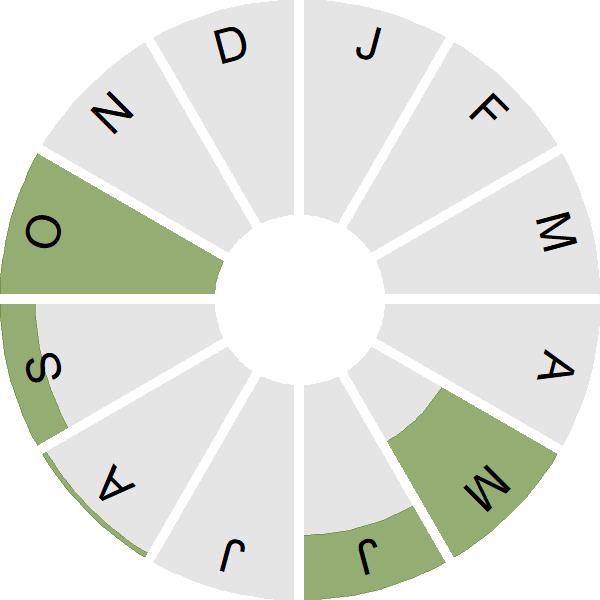Thrush Nightingale

Introduction
The Thrush Nightingale's breeding distribution sits to the east of that of the Common Nightingale, and extends further to north.
This is a scarce visitor to Britain, with roughly two-thirds of the records coming from Scotland, where it tends to be a spring bird.

Key Stats
Status and Trends
Conservation Status
Population Size
Population Change
Population trends of this scarce species are not routinely monitored.
Distribution
This species is a rare vagrant and was recorded during Bird Atlas 2007–11 as shown on the map.
or view it on Bird Atlas Mapstore.
European Distribution Map
Distribution Change
This vagrant is too rarely reported to map distribution change.
Seasonality
This species has been too rarely reported to BirdTrack during 2011–22 to properly assess seasonality.
Movement
Britain & Ireland movement
Foreign locations of birds ringed or recovered in Britain & Ireland
Dots show the foreign destinations of birds ringed in Britain & Ireland, and the origins of birds ringed overseas that were subsequently recaptured, resighted or found dead in Britain & Ireland. Dot colours indicate the time of year that the species was present at the location.
- Winter (Nov-Feb)
- Spring (Mar-Apr)
- Summer (May-Jul)
- Autumn (Aug-Oct)

European movements
EuroBirdPortal uses birdwatcher's records, such as those logged in BirdTrack to map the flows of birds as they arrive and depart Europe. See maps for this species here.
The Eurasian-African Migration Atlas shows movements of individual birds ringed or recovered in Europe. See maps for this species here.
Biology
Survival and Longevity
Survival is shown as the proportion of birds surviving from one year to the next and is derived from bird ringing data. It can also be used to estimate how long birds typically live.
View number ringed each year in the Online Ringing Report.
Classification, names and codes
Classification and Codes
- Order: Passeriformes
- Family: Muscicapidae
- Scientific name: Luscinia luscinia
- Authority: Linnaeus, 1758
- BTO 2-letter code: FN
- BTO 5-letter code: THRNI
- Euring code number: 11030
Alternate species names
- Catalan: rossinyol rus
- Czech: slavík tmavý
- Danish: Nattergal
- Dutch: Noordse Nachtegaal
- Estonian: ööbik
- Finnish: satakieli
- French: Rossignol progné
- German: Sprosser
- Hungarian: nagy fülemüle
- Icelandic: Húmgali
- Irish: Filiméala Smólaigh
- Italian: Usignolo maggiore
- Latvian: lakstigala
- Lithuanian: rytine lakštingala
- Norwegian: Nattergal
- Polish: slowik szary
- Portuguese: rouxinol-oriental
- Slovak: slávik velký
- Slovenian: veliki slavec
- Spanish: Ruiseñor ruso
- Swedish: näktergal
- Welsh: Eos Fraith
More Evidence
More evidence from Conservation Evidence.com
Partners
Citing BirdFacts
If you wish to cite particular content in this page (e.g. a specific value) it is best to use the original sources as linked in the page. For a more general citation of the whole page please use: BTO (20XX) BirdFacts Species: profiles of birds occurring in the United Kingdom. BTO, Thetford (www.bto.org/birdfacts, accessed on xx/xx/xxxx).

